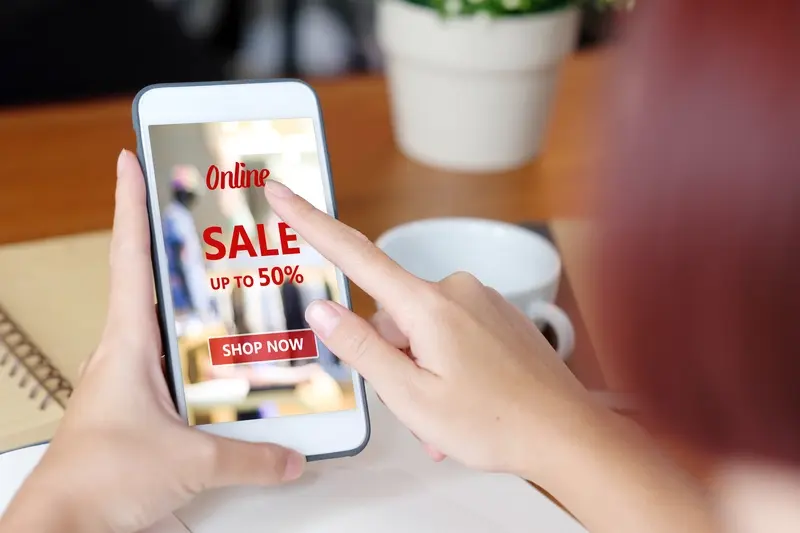What's the Best Licensing Model for Business Apps?
A promising startup spent months building their revolutionary business app, hired the best developers, and created something that actually solved real problems. When launch day arrived, they discovered a fatal flaw—they had no idea how to price it. Should they charge upfront? Go with subscriptions? Offer it free and hope for the best? Six months later, they were struggling to pay their bills whilst watching competitors with inferior products thrive simply because they'd chosen better licensing models.
Picking the right licensing model for your business app isn't just about making money—it's about survival. The mobile app market is packed with over two million apps competing for attention, and your pricing strategy can make or break everything you've worked for. Get it wrong and you'll price yourself out of the market or leave serious revenue on the table; get it right and you'll have a sustainable business that grows with your customers.
The difference between a successful app and a failed one often comes down to choosing a licensing model that matches both your product and your market's expectations.
This guide will walk you through every major licensing model available for business apps today. We'll explore freemium strategies, subscription models, enterprise pricing, and everything in between. You'll learn when each approach works best, what pitfalls to avoid, and how to structure your pricing to maximise both user adoption and long-term revenue. Whether you're launching your first app or reconsidering your current approach, understanding these licensing models will help you make informed decisions that support your business goals.
Understanding App Licensing Models
When you're building a business app, picking the right licensing model feels like choosing the foundation for your entire revenue strategy—and frankly, it is. I've worked with companies who've had brilliant apps but chose completely wrong licensing approaches; the result was predictably disappointing. The good news? There are really only a handful of main models to understand, and each one serves different types of businesses and users.
Think of app licensing as the rules that govern how people can use your software and what they need to pay for that privilege. Some models work better for apps with lots of users, others suit expensive enterprise software, and some are perfect for apps that people use occasionally. The trick is matching your licensing model to both your business goals and your users' expectations.
The Main Types You Need to Know
Here are the core licensing models that most successful business apps use:
- One-time purchase—users pay once and own the app forever
- Subscription—monthly or yearly payments for ongoing access
- Freemium—basic features free, advanced features cost extra
- Per-user licensing—pricing based on how many people use the app
- Per-device licensing—pricing based on how many devices run the app
- Revenue sharing—you take a percentage of transactions processed through the app
Each model has its sweet spot. Subscription models work brilliantly for apps that provide ongoing value or regular updates. One-time purchases suit utility apps that solve specific problems. Enterprise licensing often combines multiple approaches—perhaps per-user pricing with volume discounts and annual billing cycles.
The key is understanding your users' behaviour and willingness to pay. Are they price-sensitive? Do they use your app daily or sporadically? Will they need support and updates? These questions will guide you towards the right choice.
Freemium vs Premium Strategies
When you're choosing between freemium and premium licensing models for your business app, you're making one of the most important decisions that will affect how many people download your app—and how much money you'll make from it. Both approaches have their place, but they work very differently and suit different types of apps.
A freemium model gives users basic features for free, then charges for advanced functionality. Think of it as a taste test that hopefully leads to a purchase. Premium models charge upfront for the full app experience. No free lunch here—users pay before they get anything at all.
Which Strategy Works Best for Business Apps?
Business apps often perform better with freemium models because companies want to test software before committing budgets. A finance team won't approve spending on an expense tracking app they've never used. But if they can try the basic version first and see real value, getting approval for the paid version becomes much easier.
Premium models work well when your app solves a very specific business problem that companies already know they need to fix. Security apps, compliance tools, and specialised industry software can often charge upfront because the need is clear and urgent.
Consider a hybrid approach: offer a free trial of your premium app for 14-30 days. This gives businesses enough time to evaluate the full feature set without the limitations of a freemium model.
The Numbers That Matter
| Model Type | Typical Conversion Rate | User Acquisition |
|---|---|---|
| Freemium | 2-5% | High volume |
| Premium | 15-25% | Lower volume |
| Free trial | 8-15% | Medium volume |
The key is matching your licensing model to your target market's buying behaviour and your app's value proposition. Get this right, and you'll see both downloads and revenue grow steadily over time.
Subscription-Based Licensing
Subscription licensing has become the go-to model for many business apps—and for good reason. Instead of charging users a large upfront fee, you spread the cost over monthly or yearly payments. Think Netflix, but for your business app. Users pay a recurring fee to keep using your software, and you get predictable revenue coming in each month.
The beauty of subscriptions lies in their flexibility. You can offer different tiers—basic, professional, enterprise—each with varying features and price points. A project management app might charge £10 monthly for basic task tracking, £25 for advanced reporting, and £50 for team collaboration features. This lets businesses choose what they actually need without paying for extras they won't use.
Why Subscriptions Work So Well
From a business perspective, subscriptions are brilliant for cash flow. Rather than hoping for big one-off sales, you build a steady income stream that grows over time. If you have 1,000 subscribers paying £20 monthly, that's £20,000 coming in every month—money you can rely on for planning and growth.
Users benefit too. The barrier to entry is much lower; paying £15 monthly feels less risky than dropping £500 upfront. Plus, subscription apps typically receive regular updates and new features, so users always get the latest version without additional costs.
The Challenges You'll Face
Subscription models aren't without their hurdles. Customer retention becomes your biggest challenge—you need to keep proving your app's value month after month. If users don't see ongoing benefit, they'll cancel. You'll also need robust billing systems to handle recurring payments, failed transactions, and subscription management. The technical infrastructure is more complex than simple one-time purchases, but the long-term benefits usually justify the extra effort.
Enterprise Licensing Approaches
When you're dealing with enterprise clients, everything changes. We're not talking about someone downloading your app from the App Store anymore—we're talking about massive companies with complex needs, lengthy procurement processes, and budgets that would make your head spin. Enterprise licensing models need to reflect this reality.
The most common approach I see working well is the site licence model. This lets companies pay a flat fee to deploy your app across their entire organisation without worrying about individual user counts. It's clean, simple, and removes the headache of tracking every single person who might use the app. Finance departments love the predictability.
Volume-Based Enterprise Pricing
Many enterprises prefer tiered volume pricing—the more licences they buy, the cheaper each one becomes. This works brilliantly because it encourages larger deployments whilst giving you that substantial upfront revenue. You might start at £50 per user for 100 licences, dropping to £30 per user for 1,000+ licences.
Enterprise clients don't just buy software; they buy relationships, support, and the confidence that you'll be around when they need you most
Custom Enterprise Agreements
Here's where things get interesting—and complicated. Large enterprises often want bespoke licensing arrangements. They might need special security compliance, custom integrations, or white-labelling options. These deals take months to negotiate but can be worth hundreds of thousands. The key is building flexibility into your enterprise pricing from day one, so you're not scrambling to create new models when that big client comes knocking.
Per-User and Per-Device Models
When you're building a business app, one of the biggest decisions you'll face is whether to charge per user or per device. I've worked with companies who've gotten this completely wrong and paid the price—literally. The choice affects not just your revenue but how your customers budget for your app and whether they'll actually use it properly.
Per-user licensing means you charge for each person who accesses the app. This works brilliantly for apps where multiple people share devices or work remotely. Think about a project management app where team members log in from different computers throughout the day. You're paying for the person, not the machine.
When Per-Device Makes More Sense
Per-device licensing charges for each piece of hardware that runs your app. This model shines when devices are shared amongst staff or when the app controls specific equipment. A point-of-sale system in a restaurant is perfect for this—multiple waiters use the same tablet, but you only need one licence per device.
The tricky bit comes when you try to enforce these models. Per-user systems need robust authentication and user management, which adds complexity. Per-device models require hardware fingerprinting or device registration, which can be a nightmare when people upgrade their phones or computers.
Which Model Generates More Revenue?
Here's what I've learned: per-user typically generates more revenue because businesses grow their teams faster than they buy new devices. But per-device can be easier to sell because procurement departments find it simpler to budget for physical assets.
| Model Type | Best For | Revenue Potential | Implementation Difficulty |
|---|---|---|---|
| Per-User | Remote teams, shared devices | Higher | Complex authentication |
| Per-Device | Fixed workstations, shared equipment | Predictable | Hardware tracking |
The sweet spot? Many successful apps offer both options and let customers choose based on their specific situation. This flexibility often wins deals that rigid pricing models lose.
Revenue Sharing and Commission Models
Revenue sharing models work differently from the licensing models we've covered so far. Instead of charging users upfront or through subscriptions, you earn money when your users make money. This approach works particularly well for business apps that help companies generate income—think sales platforms, marketplace apps, or booking systems.
The most common setup involves taking a percentage of each transaction processed through your app. Payment processors like Stripe typically charge around 2-3%, whilst app-based marketplaces often take anywhere from 5-30% depending on the value they provide. The key is finding that sweet spot where you're earning enough to sustain your business without making the cost prohibitive for your users.
When Revenue Sharing Makes Sense
This model works best when your app directly facilitates transactions or helps users earn money. E-commerce platforms, booking systems, and freelance marketplaces are perfect examples. Users are more willing to pay a commission because they're only paying when they're actually making money through your platform.
Start with a lower commission rate to attract users, then gradually increase it as you add more value and features. Users who are already making money through your platform are less likely to leave over small percentage increases.
The Challenges You'll Face
Revenue sharing sounds straightforward, but it comes with complications. You'll need robust financial tracking, transparent reporting systems, and reliable payment processing. Users want to see exactly how much you're taking and when—any confusion here will damage trust quickly. You'll also face unpredictable income; if your users have a bad month, so do you.
The model requires significant user volume to generate meaningful revenue, making it less suitable for niche business apps with smaller user bases.
Conclusion
After working through all these different licensing models, you might be feeling a bit overwhelmed—and that's completely normal! Choosing the right licensing approach for your business app isn't a decision you should rush into. Each model has its place, and what works brilliantly for one company might be completely wrong for another.
The key thing to remember is that your licensing model should align with how your customers actually want to use your app. If you're building something that people will use every single day, a subscription model makes perfect sense. But if your app solves a specific problem that people only encounter occasionally, a one-time purchase or freemium model might be the better choice.
Enterprise customers tend to prefer predictable costs and clear per-user pricing, whilst smaller businesses often gravitate towards flexible options that let them scale up gradually. Revenue sharing models work well when you're helping customers make money directly, but they can be tricky to implement fairly.
Don't forget that you can always change your licensing model later—though it's much easier to get it right from the start than to migrate existing customers to a new system. Test your assumptions early, talk to your target customers about what they'd prefer, and be prepared to adjust based on real feedback rather than what you think people want.
The best licensing model is the one that creates a win-win situation: your customers get clear value for what they're paying, and you build a sustainable business that can keep improving the app over time.
Share this
Subscribe To Our Learning Centre
You May Also Like
These Related Guides

What Are The Pros And Cons Of Ad-Supported Apps?

What Licences Do I Need to Stream Music Legally in My App?



